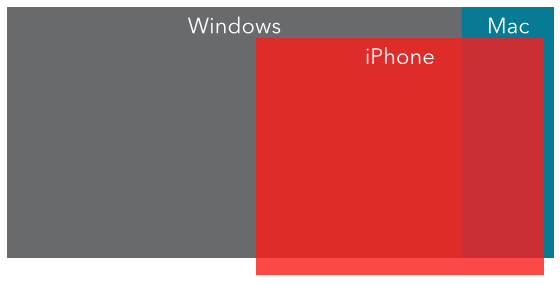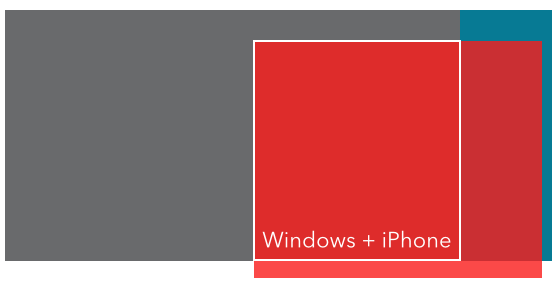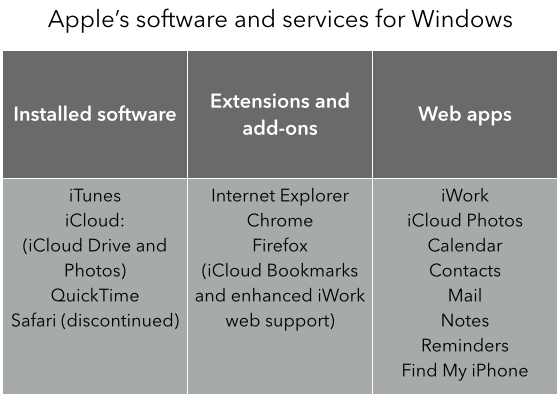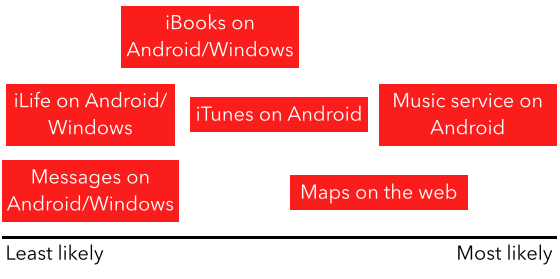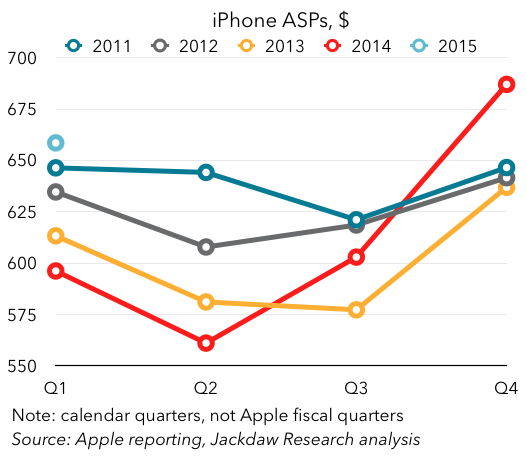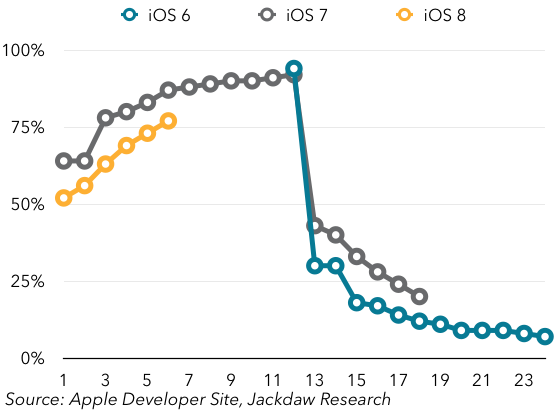For the Beyond Devices podcast last week (embedded at the bottom of this post), we discussed Apple’s content-focused announcements from WWDC, including Apple Music. For our Question of the Week (a regular feature), we discussed one specific element of the Music service, and that was the three DJs Apple hired for Beats 1. We discussed that for probably 10-15 minutes (it starts around 20:25 in the episode), but I thought I’d quickly share some of the key points here.
Apple has hired three DJs for Beats 1 (so far):
- Zane Lowe, who comes from BBC Radio 1, and is the figurehead of the service, and by Apple’s implication pulled in the other two
- Ebro Darden, from New York’s Hot97, a mostly hip hop station, where he was until about a year ago the station director, and where he has been presenting the morning show
- Julie Adenuga, from RinseFM in London, the least experienced and well known of the three.
I’ll talk about each in turn below, and then share some general thoughts about these DJs and their significance.
Zane Lowe – Global (LA)
Zane Lowe will be the voice of the global station, and this is the last of a series of transitions that’s seen him go from growing up in New Zealand to working in a record shop in London’s Notting Hill to hosting a show on XFM in London, to BBC’s national Radio 1 station, to arguably the first mainstream global radio station at Beats 1. Zane Lowe has a unique style as a DJ, though it was frustratingly difficult in my research to find examples of him broadcasting (ironically, because BBC iPlayer provides a great legitimate source of rebroadcasts, but yanks them after a month or so, and Lowe stopped broadcasting in March). He tends to talk over tracks, react vocally to things, and generally make lots of noise. Above all, he’s an enthusiast about music – not a critic for criticism’s sake, but someone who genuinely loves music and wants to share the best stuff with other people. That’s also made him something of a tastemaker, helping new acts break into the public consciousness – that’s important, and something I’ll come back to below.
Lowe is also a performer in his own right as a DJ, and has contributed producing and writing talent to other artists, which earned him a Grammy nomination for his work on Sam Smith’s breakthrough album. He’s brought some interesting segments to his Radio 1 show in the past, including doing deep dives on classic albums, playing the whole thing through and discussion it and related topics on his show – it’d be very interesting to see him do something similar on Beats 1, though I’m sure he’s got plenty of other ideas. He’s also done lots of interviews with high profile artists including Kanye West, Jay-Z, Chris Martin, and Eminem. Above all, Zane Lowe is a mainstream, top 40 music kind of guy, covering all the popular genres without going deep on any of them. Radio 1 is the BBC’s youth-oriented popular music station, and that’s very much his role at Beats 1 too.
Ebro Darden (New York)
Ebro Darden is another very experienced DJ, but one who’s much more narrowly focused on a specific genre, hip hop, rather than covering the breadth of stuff Zane Lowe covers. Hot97 is one of the major hip hop stations in the world, and as such he and his fellow DJs have become some of the arbiters of what’s good and even what counts as “real” hip hop (see this Radiolab episode for a fascinating discussion of one of Darden’s colleagues at Hot 97, a Jewish guy called Peter Rosenberg who’s nonetheless one of the major influencers in the hip hop world, somewhat controversially). So even though Apple positions Ebro Darden as covering the New York music scene, I suspect he’s actually going to be covering mostly that genre, a subset of the stuff Lowe will play.
Darden is also a more controversial figure, willing to mix it up with artists and others on Twitter and elsewhere, calling them out on their false claims to hip hop credibility and such, which makes him a more controversial figure than Zane Lowe, and one who’s willing to call out things he doesn’t see as kosher. Again, though, he’s a tastemaker as well as just spinning discs people already know and love.
Julie Adenuga (London)
Julie Adenuga is to my mind the most interesting and surprising of the three: she’s far less well known than the others, she’s a lot younger (mid 20s rather than early 40s), and has a lot less experience as a DJ. She’s a fascinating choice in that way. She’s also much more like Ebro Darden than Zane Lowe, in that she’s associated with a particular genre of music, broadly speaking a certain brand of London club music, but more specifically the Grime genre, which is a sort of evolution of the UK flavor of garage music (both styles combine electronica with rap-style vocals). She has two brothers who are prominent grime musicians in London too, so there’s some family credibility in that particular genre in addition to her own self-made success as an up-and-coming DJ on Rinse FM, a former pirate radio station that went legitimate around the same time she joined a few years back.
She’s got a fun personality both on the radio and in videos I came across during my research, and my favorite quote from my research was “Her drive time Rinse FM show became scientifically proven as the only thing that could make you smile on your way home on a London bus”. That should make her a fun DJ on Beats 1, too. Like Zane Lowe, she’s done lots of interviews with popular artists both on the show and elsewhere, and I wonder if she’ll bring some of that to Beats 1 too.
General thoughts
What really stood out to me with all three of these DJs is that they’re not just figureheads, but tastemakers, defining tastes and breaking new artists in a way no algorithm ever could. Though Spotify, SoundCloud, and the like have undoubtedly helped break some new artists, it’s largely the social element and the users that have made that happen, not the curation or recommendations from the services themselves. Beats 1’s DJs could therefore add an interesting new angle, not just helping you discover stuff you don’t know about that others do, but helping to bring new artists to the world for the first time as well.
Another big question in my mind is exactly how Beats 1 will be structured – with just three DJs, it can hardly be a 24/7 radio station, so how will Apple fill the remaining air time? How often will each of these DJs “broadcast” and to what extent will this be a live experience or a pre-recorded thing more like a podcast that you listen to when it’s convenient? And although there are three DJs already, it’s clear that there’s plenty of music out there that these three wouldn’t cover, notably jazz, classical, and even many other sub-genres of the mainstream stuff Zane Lowe covers, with just two genres covered by Darden and Adenuga for now. It’ll be interesting to watch this set of DJs evolve over time and to watch also how Apple will package all this up into a radio station.
It’s also fascinating to watch Apple building a radio station, when traditional radio stations (including Zane Lowe’s former employer Radio 1) are evolving their branding and position beyond the traditional radio model and towards YouTube, Snapchat and other media in addition to radio itself. Apple, of course, has many other music related offerings beyond Beats 1, including Apple Music and its new Connect service, but in some ways Apple is moving against the stream (no pun intended) at the moment. It’s worth noting that even Spotify is moving into video.
At any rate, if you want to listen to us discussing all this on the podcast from last week, you can do so using the embed below, or go straight to the website to see this and other episodes as well as links to iTunes, Overcast, and so on for adding the podcast to your podcast app of choice.
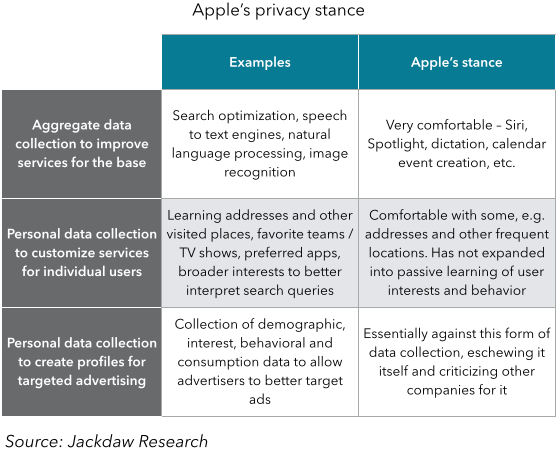 If this is accurate, and I believe it is, then Apple isn’t constrained at all when it comes to broad improvement of its services on an aggregated basis, because it’s clearly entirely comfortable with this form of data collection and analysis, and has even recently started crawling websites itself to further this effort. In the second category, it seems very comfortable with building basic profiles of its users through a combination of data users actively pass to its systems and a small amount of data inferred from behavior
If this is accurate, and I believe it is, then Apple isn’t constrained at all when it comes to broad improvement of its services on an aggregated basis, because it’s clearly entirely comfortable with this form of data collection and analysis, and has even recently started crawling websites itself to further this effort. In the second category, it seems very comfortable with building basic profiles of its users through a combination of data users actively pass to its systems and a small amount of data inferred from behavior 